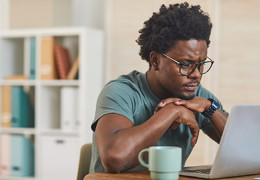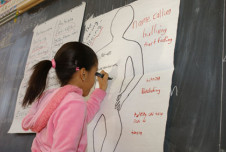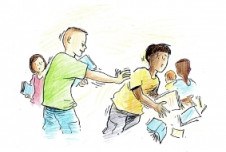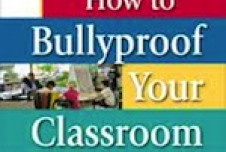All 50 U.S. states require schools to have a bullying prevention policy.

But a policy, alone, is not enough. Despite the requirement, there’s been a slight uptick in all forms of bullying during the last three years. Bullying can look like experienced basketball players systematically intimidating novice players off the court, kids repeatedly stigmatizing immigrant classmates for their cultural differences, or a middle-school girl suddenly being insulted and excluded by her group of friends.
Bullying occurs everywhere, even in the highest-performing schools, and it is hurtful to everyone involved, from the targets of bullying to the witnesses—and even to bullies themselves. October is National Bullying Prevention Month, so it’s a good time to ask ourselves: What are the best practices for preventing bullying in schools? That’s a question I explored with my colleague Marc Brackett from the Yale Center for Emotional Intelligence, in a recent paper, Rethinking School-Based Bullying Prevention Through the Lens of Social and Emotional Learning, that reviewed dozens of studies of real-world bullying prevention efforts.
As we discovered, not all approaches to bullying prevention are equally effective. Most bullying prevention programs focus on raising awareness of the problem and administering consequences. But programs that rely on punishment and zero tolerance have not been shown to be effective in the U.S.; and they often disproportionately target students of color. Programs like peer mediation that place responsibility on the children to work out conflicts can increase bullying. (Adult victims of abuse are never asked to “work it out” with their tormentor, and children have an additional legal right to protections due to their developmental status.) Bystander intervention, even among adults, only works for some people—extroverts, empaths, and people with higher social status and moral engagement. Many approaches that educators adopt have not been evaluated through research; instead, educators tend to select programs based on what their colleagues use.
We found two research-tested approaches that show the most promise for reducing bullying (along with other forms of aggression and conflict). They are a positive school climate, and social and emotional learning.
Building a positive school climate
School climate can be difficult to define, though possible to measure. It is the “felt sense” of being in a school, which can arise from a greeting, the way a problem is resolved, or how people work together; it is a school’s “heart and soul,” its “quality and character.” Schools with a positive climate foster healthy development, while a negative school climate is associated with higher rates of student bullying, aggression, victimization, and feeling unsafe.
The elements of a positive climate may vary, but may often include norms about feelings and relationships, power and how it is expressed, and media consumption. Social norm engineering is a conscious process that builds a positive culture among student peers and school adults that becomes self-reinforcing. Like a healthy immune system, a positive school climate promotes optimal health and reduces the chances of dysfunction or disease.
Leadership is key to a positive climate. Is bullying minimized as a “normal rite of childhood,” or is it recognized as the harmful peer abuse that it is? Do leaders understand that uninterrupted, severe bullying can confer lifelong negative consequences on targets of bullies, bullies, and witnesses? Are school leaders committed to promoting all children’s positive psychological health, or do they over-rely on punishing misbehavior? Can they discern between typical developmental processes that need guidance versus bullying that needs assertive intervention? Are educators empathic to their students, and do they value children’s feelings?
Next, are teachers prepared to deal with bullying? Students consistently report that teachers miss most incidents of bullying and fail to help students when asked. A majority of teachers report that they feel unprepared to deal with classroom bullying. Some teachers bully students themselves, or show a lack of empathy toward children who are bullied. Teachers report that they receive little guidance in “classroom management,” and sometimes default to the disciplinary strategies they learned in their own families growing up.
However, reforming school climate should involve all stakeholders—students and parents, as well as the administrators and teachers—so a school’s specific issues can be addressed, and the flavor of local cultures retained. School climate assessments can be completed periodically to track the impact of improvements.
Advancing social and emotional learning
Social and emotional learning (SEL) is well known, and involves teaching skills of self-awareness, self-management, social awareness, responsible decision making, and relationships management. (Full disclosure: Brackett and I are affiliated with the SEL program RULER.)
Evidence-based SEL approaches have been shown to deliver cost-effective, solid results. Numerous meta-analyses, research reviews, and individual studies of hundreds of thousands of K-12 students show that SEL improves emotional well-being, self-regulation, classroom relationships, and kind and helpful behavior among students. It reduces a range of problems like anxiety, emotional distress, and depression; reduces disruptive behaviors like conflicts, aggression, bullying, anger, and hostile attribution bias; and it improves academic achievement, creativity, and leadership.
A 2012 study of 36 first-grade teachers showed that when teachers were more emotionally supportive of students, children were less aggressive and had greater behavioral self-control, compared to the use of behavior management, which did not improve student self-control. One 2018 meta-analysis showed that developing emotional competence was protective against becoming a victim of bullying; social competence and academic performance were protective against becoming a bully; and positive peer interactions were protective against becoming a bully-victim (one who has been bullied and bullies others). A series of longitudinal studies showed positive effects into midlife (e.g., fewer divorces, less unemployment) and even cross-generational effects of early SEL. Compared to a matched control group, the children of the adults who participated in the Perry Preschool Project had less criminal involvement and higher educational and employment achievement. A cost-benefit analysis of six SEL programs found them to be good investments, with $11 saved for every $1 spent.
Teachers also benefit from SEL. Those with emotional and social skills training have higher job satisfaction and less burnout, show more positive emotions toward their students, manage their classrooms better, and use more strategies that cultivate creativity, choice, and autonomy in their students. Teachers report that they want more SEL support to cultivate their own emotional and social skills, and to better understand their students’ feelings. But few teacher training programs focus on growing the teachers’ emotion regulation skills.
Bullying at different age levels
SEL approaches should be developmentally wise, since what is salient and possible for children changes at different ages.
For example, preschoolers are expelled from school at the highest rates of all, but the neurological hardware for their self-control is only just developing. Only then are the connections between the emotion circuitry and the more thinking regions of the prefrontal cortex beginning to be myelinated (insulated for faster connectivity), something that will take until the mid 20s to complete. An SEL program like PATHS or RULER that teaches young children language for feelings, and strategies for thinking before acting, can develop better self-regulation.
Sometimes, adults confuse normal developmental processes with bullying. For example, children begin to reorganize their friendships midway through elementary school, something that can naturally create hurt feelings and interpersonal conflict. It should not be misconstrued as bullying, though, which involves intentional, repeated aggression within an imbalance of power. Normal development also includes experimenting with power, and these normal dynamics should be guided safely toward developing a healthy sense of agency, rather than a hurtful exertion of power over someone else.
Finally, the onset of puberty marks the beginning of heightened sensitivity to social relationships, an especially important time to cultivate skills for kinder, gentler relationships. Unfortunately, this is the period when bullying spikes the highest. And while some strategies work well for younger children (for example, advising them to “tell a trusted adult”), this option may fail with teens, and the breakpoint seems to be around the eighth grade. Older teens require approaches that are less didactic and leverage their need for autonomy, while affirming their values and search for meaning. Physiologically, the brain changes during puberty confer a second chance for recalibrating their stress regulation system. That opportunity should be constructively seized.
Approaches should also take into account individual differences between children. Even SEL programs can stumble here, over-relying on just one or two emotion regulation strategies, like breathing or mindfulness. But children vary in their temperaments, sensitivities, strengths, and vulnerabilities. The best SEL approaches guide students toward discovering strategies that work best for them—strategies that are emotion- and context-specific, personalized, and culturally responsive. This approach requires unconventional flexibility on the part of the educators.
And, finally, approaches work best if they are not standalone pedagogies or from kits that end up in the classroom closet at the end of the year. In order to be effective, skills should become fully embedded across the curricula and the entire day, in all settings, and implemented by all adults—in other words, infiltrating the ecosystem. Only approaches used and taught as intended are successful.
Schools can’t do this alone
Families matter, too. Bullying in schools sometimes arises from harsh parenting practices or sibling bullying at home.
Even parents’ workplaces matter. Adults experience bullying in their workplaces at about the same rate as children in schools, and it’s even found among teachers and in senior living communities. In other words, bullying is not just a childhood problem; it is a pervasive human problem. And children are not buffered from the wider social world—bullying of children who belong to groups targeted in the national political discourse has spiked on playgrounds nationwide.
Ultimately, we need a substantial shift in our mindsets about the importance of children and their feelings. Children are more likely to thrive when we nurture their humanity, and offer them language and strategies and values to help them identify, express, and, thus, regulate their feelings. When parents, teachers, and administrators gain new awareness into the complex roots of bullying and adopt new strategies for addressing it, schools can lead the way. The kids are counting on us.









Comments